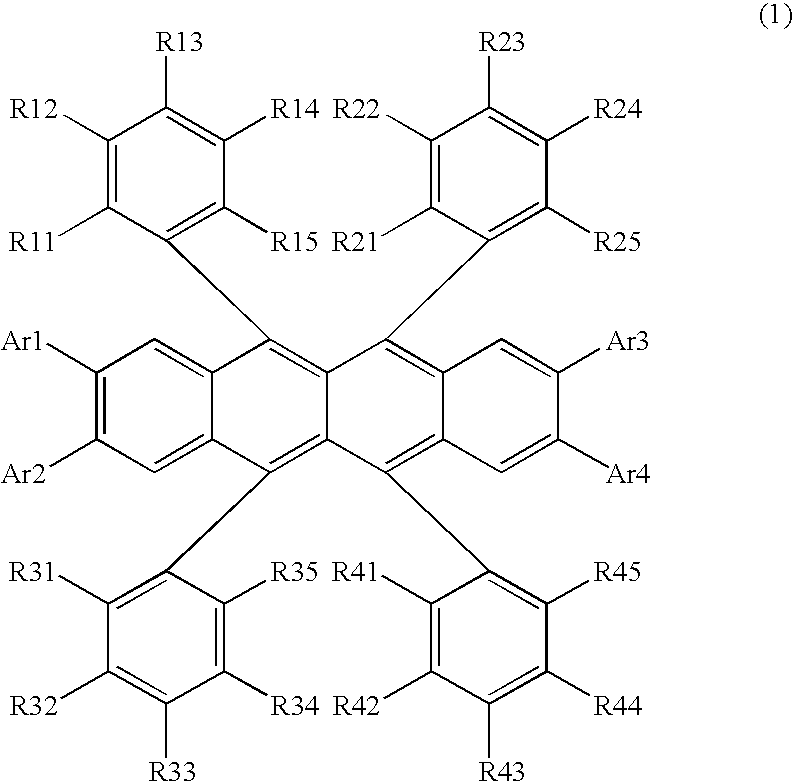Organic electroluminescent element
- Summary
- Abstract
- Description
- Claims
- Application Information
AI Technical Summary
Benefits of technology
Problems solved by technology
Method used
Image
Examples
examples 1 to 3
[0025] Using the materials shown in Table 1, a hole injection layer, a hole transfer layer, a red-orange light-emitting layer, a blue light-emitting layer, an electron transfer layer and a cathode (electron injection electrode) were formed. In the table, the numerals in the parenthesis show the thickness (nm) of each layer.
[0026] The compound 1 used in the red-orange light-emitting layer is the luminescent material represented by the above formula (4) according to the present invention, the compound 2 is the luminescent material represented by the above formula (5) according to the present invention and the compound 3 is the luminescent material represented by the above formula (6) according to the present invention.
[0027] The compound 4 used in the blue light-emitting layer is 2-tertiary-butyl-9,10-di (β-naphthyl) anthracene and a compound having the following structural formula.
[0028] Perylene used in the blue light-emitting layer is a compound having the following structural ...
PUM
| Property | Measurement | Unit |
|---|---|---|
| Electroluminescence | aaaaa | aaaaa |
| Luminescence | aaaaa | aaaaa |
Abstract
Description
Claims
Application Information
 Login to View More
Login to View More - R&D Engineer
- R&D Manager
- IP Professional
- Industry Leading Data Capabilities
- Powerful AI technology
- Patent DNA Extraction
Browse by: Latest US Patents, China's latest patents, Technical Efficacy Thesaurus, Application Domain, Technology Topic, Popular Technical Reports.
© 2024 PatSnap. All rights reserved.Legal|Privacy policy|Modern Slavery Act Transparency Statement|Sitemap|About US| Contact US: help@patsnap.com










